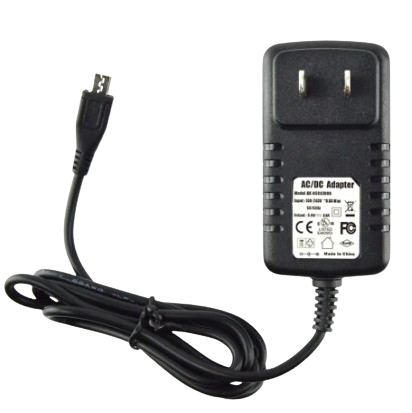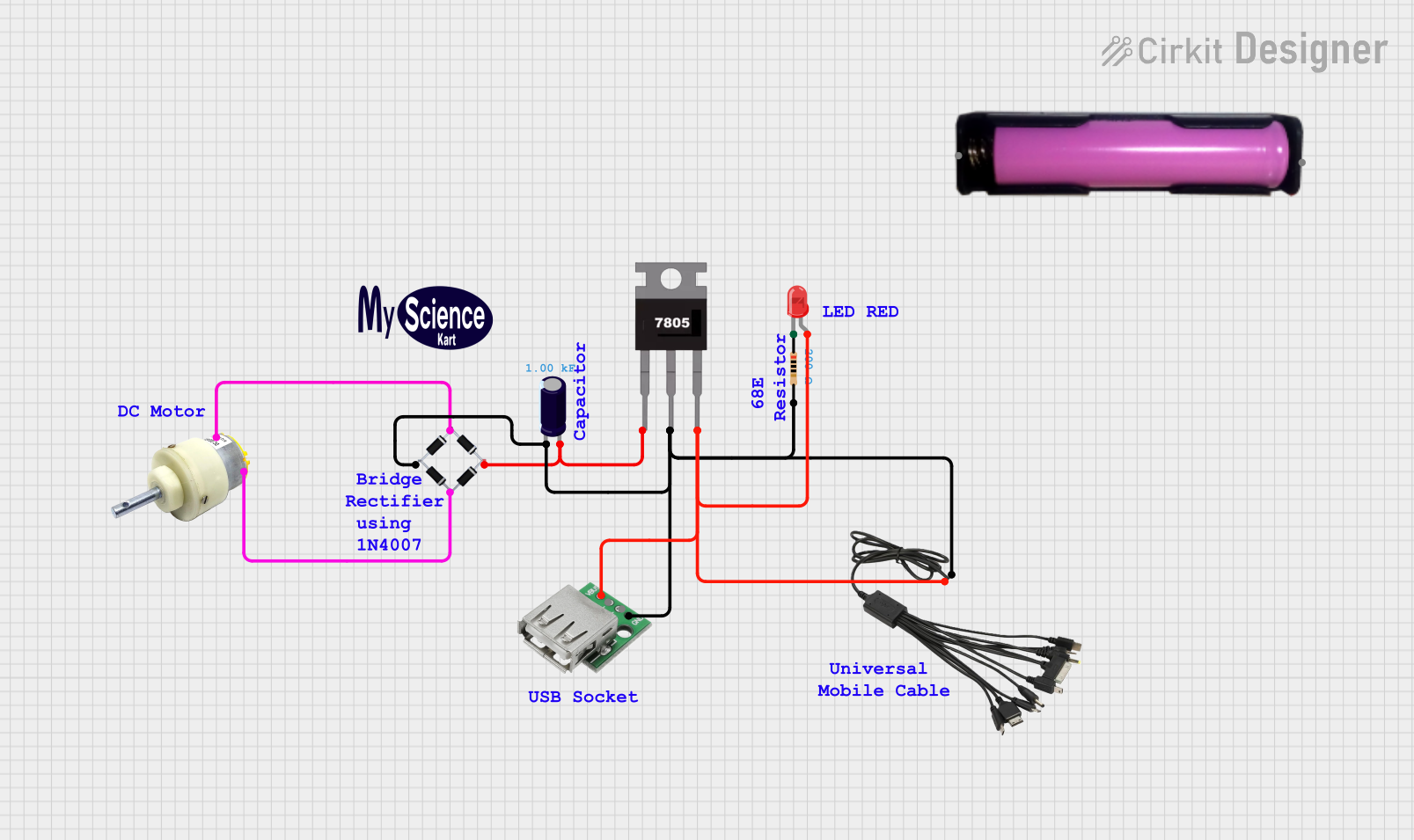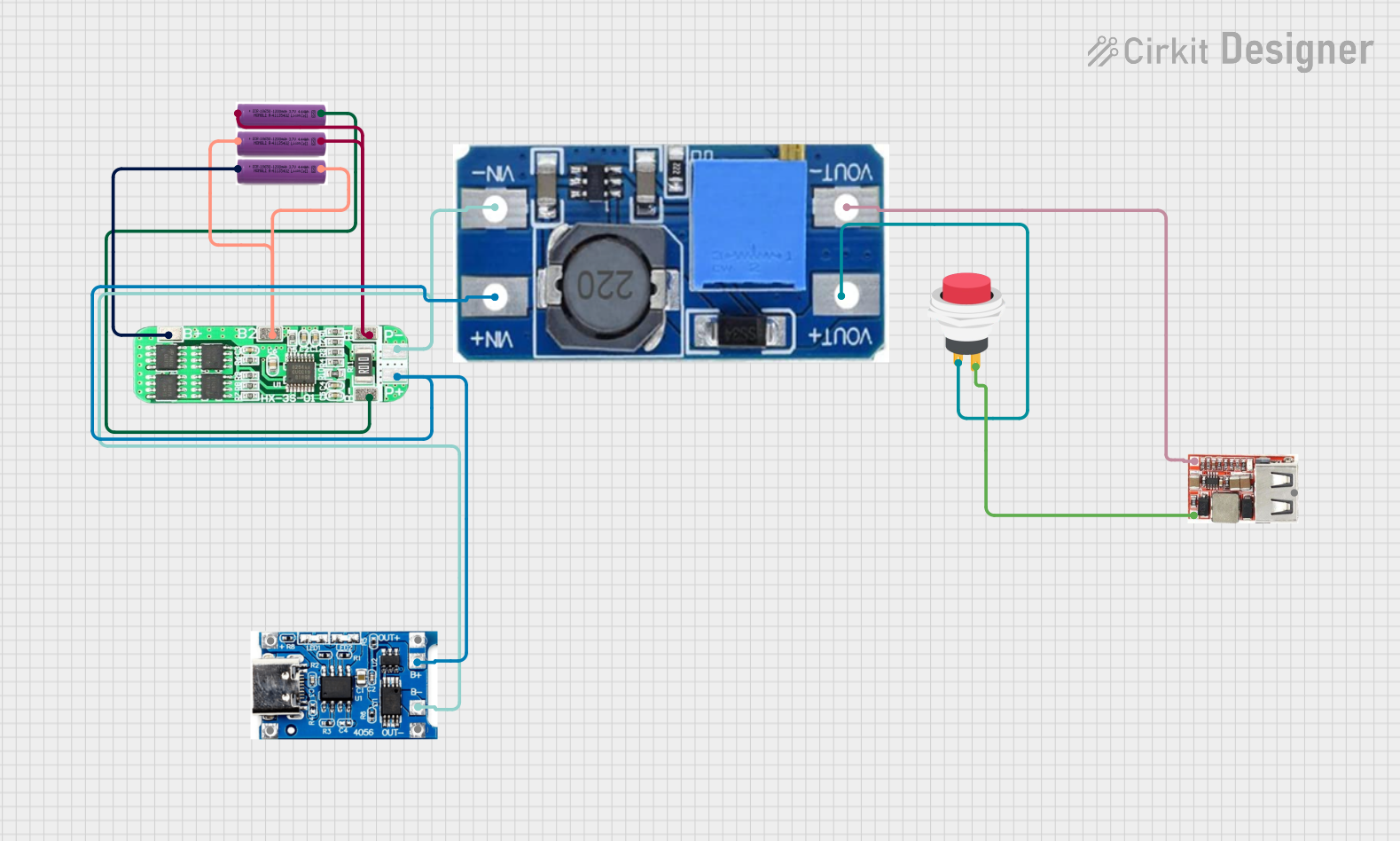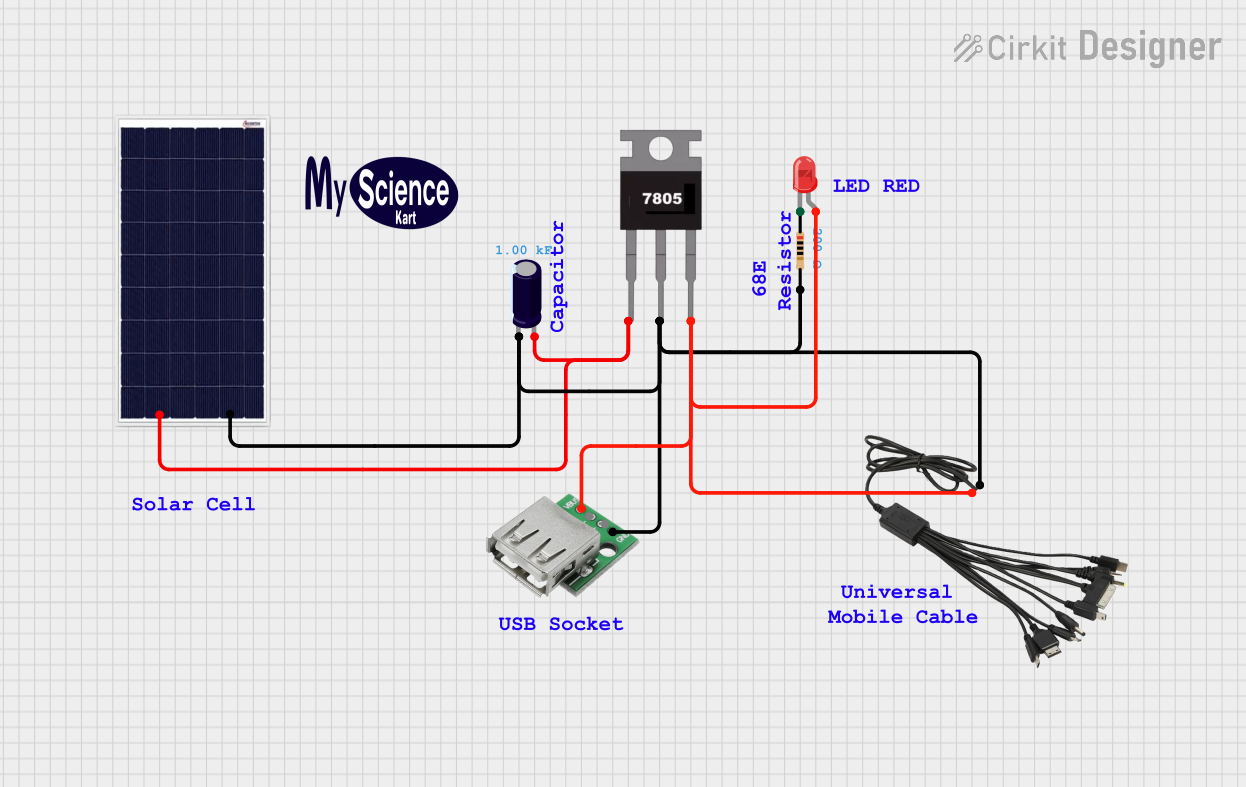
How to Use Charger Micro USB 5V 3A: Examples, Pinouts, and Specs

 Design with Charger Micro USB 5V 3A in Cirkit Designer
Design with Charger Micro USB 5V 3A in Cirkit DesignerIntroduction
The Charger Micro USB 5V 3A (Manufacturer: AC, Part ID: Charger) is a compact and efficient power supply device designed to deliver a stable 5V output with a maximum current of 3A. It connects via a standard Micro USB port, making it compatible with a wide range of electronic devices, including smartphones, tablets, single-board computers (e.g., Raspberry Pi), and other USB-powered gadgets.
Explore Projects Built with Charger Micro USB 5V 3A

 Open Project in Cirkit Designer
Open Project in Cirkit Designer
 Open Project in Cirkit Designer
Open Project in Cirkit Designer
 Open Project in Cirkit Designer
Open Project in Cirkit Designer
 Open Project in Cirkit Designer
Open Project in Cirkit DesignerExplore Projects Built with Charger Micro USB 5V 3A

 Open Project in Cirkit Designer
Open Project in Cirkit Designer
 Open Project in Cirkit Designer
Open Project in Cirkit Designer
 Open Project in Cirkit Designer
Open Project in Cirkit Designer
 Open Project in Cirkit Designer
Open Project in Cirkit DesignerCommon Applications and Use Cases
- Charging smartphones, tablets, and other portable devices.
- Powering single-board computers like Raspberry Pi or Arduino-based projects.
- Supplying power to IoT devices and small electronic circuits.
- Use in prototyping and development environments requiring a reliable 5V power source.
Technical Specifications
Below are the key technical details of the Charger Micro USB 5V 3A:
| Parameter | Specification |
|---|---|
| Input Voltage | 100-240V AC, 50/60Hz |
| Output Voltage | 5V DC |
| Maximum Output Current | 3A |
| Connector Type | Micro USB |
| Efficiency | ≥85% |
| Cable Length | Typically 1 meter |
| Operating Temperature | 0°C to 40°C |
| Storage Temperature | -20°C to 70°C |
| Safety Features | Overcurrent, overvoltage, and short-circuit protection |
Pin Configuration and Descriptions
The Micro USB connector used in this charger has the following pinout:
| Pin Number | Name | Description |
|---|---|---|
| 1 | VBUS (+5V) | Provides the 5V DC output voltage. |
| 2 | D- (Data -) | Data line, typically unused for charging. |
| 3 | D+ (Data +) | Data line, typically unused for charging. |
| 4 | ID | Identification pin, often left unconnected. |
| 5 | GND (Ground) | Ground connection for the circuit. |
Usage Instructions
How to Use the Component in a Circuit
- Connect the Charger to a Power Source: Plug the charger into a standard AC outlet (100-240V AC).
- Connect the Micro USB Output: Insert the Micro USB connector into the device or circuit requiring power.
- Verify Compatibility: Ensure the device being powered operates at 5V and does not exceed a current draw of 3A.
- Monitor Operation: Check for proper operation of the connected device. The charger includes built-in protections to prevent damage in case of overcurrent or short circuits.
Important Considerations and Best Practices
- Avoid Overloading: Do not connect devices that require more than 3A, as this may cause the charger to shut down or overheat.
- Ensure Proper Ventilation: Use the charger in a well-ventilated area to prevent overheating.
- Check Cable Quality: Use high-quality Micro USB cables to minimize voltage drops and ensure reliable power delivery.
- Avoid Prolonged Use in Extreme Conditions: Do not use the charger in environments exceeding its operating temperature range (0°C to 40°C).
Example: Powering an Arduino UNO
The Charger Micro USB 5V 3A can be used to power an Arduino UNO via its USB port. Below is an example of how to use it in a simple LED blink project:
Circuit Setup
- Connect the charger to the Arduino UNO's USB port.
- Connect an LED to pin 13 of the Arduino UNO, with a 220-ohm resistor in series to limit current.
Arduino Code
// Simple LED Blink Example
// This code blinks an LED connected to pin 13 of the Arduino UNO.
void setup() {
pinMode(13, OUTPUT); // Set pin 13 as an output pin
}
void loop() {
digitalWrite(13, HIGH); // Turn the LED on
delay(1000); // Wait for 1 second
digitalWrite(13, LOW); // Turn the LED off
delay(1000); // Wait for 1 second
}
Troubleshooting and FAQs
Common Issues Users Might Face
Device Not Charging or Powering On:
- Cause: The device may require more than 3A or the cable may be faulty.
- Solution: Verify the device's power requirements and use a high-quality cable.
Charger Overheating:
- Cause: Prolonged use at maximum load or poor ventilation.
- Solution: Ensure proper ventilation and avoid using the charger at its maximum capacity for extended periods.
Intermittent Power Delivery:
- Cause: Loose connections or damaged cable.
- Solution: Check all connections and replace the cable if necessary.
Charger Not Working:
- Cause: Internal fault or power surge damage.
- Solution: Test the charger with a different device. If it still doesn't work, replace the charger.
FAQs
Q1: Can this charger be used with devices requiring less than 3A?
Yes, the charger will only supply the current required by the device, up to a maximum of 3A.
Q2: Is this charger compatible with fast-charging protocols like Quick Charge?
No, this charger provides a fixed 5V output and does not support fast-charging protocols.
Q3: Can I use this charger outdoors?
This charger is not weatherproof and should only be used in dry, indoor environments.
Q4: What happens if I connect a device requiring more than 3A?
The charger includes overcurrent protection and will shut down to prevent damage.